Recent Storm Damage Posts
Prepare Your Milwaukee Team for a Weather Emergency | SERVPRO of Cudahy/St. Francis
9/18/2023 (Permalink)
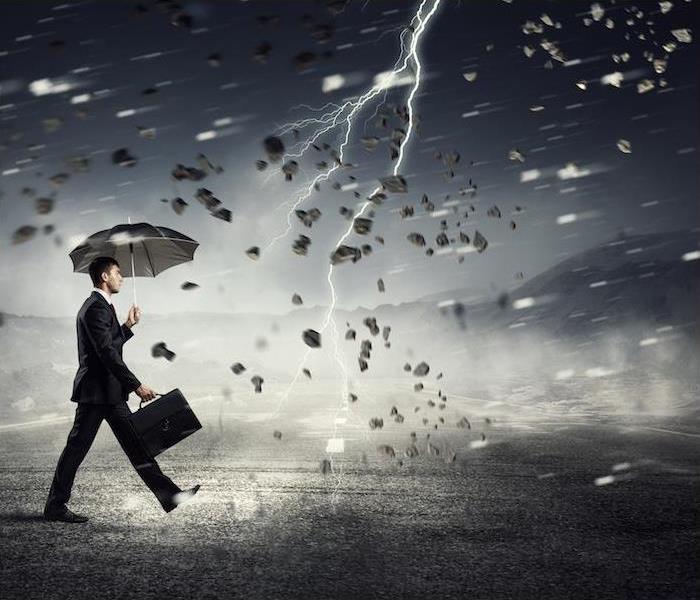 If your home or business was damaged in a storm, call SERVPRO of Cudahy/St. Francis to get you back in action.
If your home or business was damaged in a storm, call SERVPRO of Cudahy/St. Francis to get you back in action.
Being prepared for everything is one of the most important principles that business owners strive to instill in their employees. They prepare their team to overcome any challenge through training and continuous learning while also cultivating resilience and teamwork.
While most business owners are focused on educating their employees to overcome work-related obstacles, they may overlook the importance of preparing their staff for outside issues that may arise on their premises. Extreme weather is one of those unexpected occurrences that might catch your team off-guard.
Don’t let your crew rush around frantically during a weather emergency! Use our tips to ensure your team is prepared to weather any storm.
Know Your RiskAssessing weather threats based on your specific location is the first step in developing a storm-ready plan for your business workplace. Because each region is prone to different sorts of storms, knowing the frequent risks that affect your area will help you narrow down what to prepare for.
Your Milwaukee business should anticipate a variety of local threats like flooding, severe storms, snowfall and tornadoes. Each year, these threats leave both homes and businesses with expensive aftermaths. Preparing your business in the best way you can is the thing that will keep it up and running when disaster strikes!
Understanding your flood risk is one example of being fully prepared before a calamity strikes your Milwaukee business. Other methods, such as staying up to speed with local weather alerts and tuning into local weather forecasts before each work week, might help you prepare your Milwaukee team.
Make a Plan to CommunicateA way to communicate is one of the most crucial things your team will require during a weather disaster. In this digital age, staying connected with your team has become effortless thanks to advancements in technology.
Ensure your entire team has a communication system that allows them to receive and send any vital weather updates. When a weather situation arises, this seamless mode of communication is quite helpful and will enable your team to act quickly. This could entail alerting them to gather supplies or prompting them to evacuate.
Plan Your EvacuationWhile you never want it to happen, your team may need to evacuate quickly during a weather disaster. Make sure your team knows where to go by highlighting evacuation routes and any secondary exits. Label these routes, and hold regular exercises to familiarize your employees with the evacuation procedure.
During certain weather occurrences, evacuation may not be safe, and it may be far safer to stay put. Prepare a plan for your team to shelter in place by selecting a safe area, ideally without windows.
Whether you are sheltering in place or making a speedy evacuation, it’s vital to keep your team calm! Practice your escape plan, emphasize local weather dangers and have a quick means of communication to keep your commercial team calm and collected in the eye of any storm.
Don’t let extreme weather take control! If storms strike your business, SERVPRO can help you restore your losses.
Securing the Exterior of Your Home Before Storms | SERVPRO of Cudahy/St. Francis
9/18/2023 (Permalink)
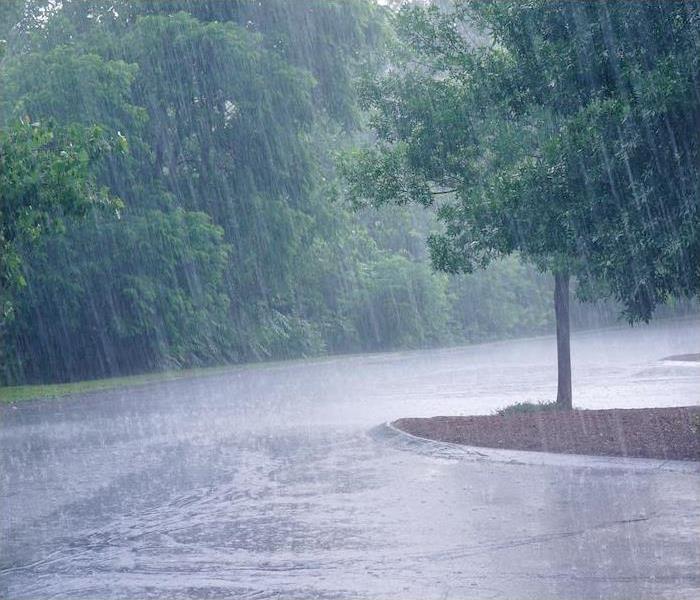 Have you been impacted by the unusual summer storm season? SERVPRO of Cudahy/St. Francis has your back when you experience flood and water damage.
Have you been impacted by the unusual summer storm season? SERVPRO of Cudahy/St. Francis has your back when you experience flood and water damage.
For those who live near St. Francis, it’s not uncommon to see a rain or wind storm around this time in the summer. When it comes to safeguarding your home against these storms, being proactive is key.
From wind and rain to hail and floods, storms pose various risks that can result in significant damages. Taking steps to storm-proof the exterior of your house can help mitigate risks and prevent costly repairs.
Preparing for the SeasonProtecting your home from storms doesn’t have to be a daunting task. In fact, many storm-proofing measures can be seamlessly integrated into your regular routines. Get the whole family involved and turn it into a fun activity!
Regardless of your location, strong winds and heavy rain can pose a threat to your home. Trim trees near your property, regularly clean your gutters and remove loose debris to minimize the risk of flying objects damaging windows or water pooling in your basement. Don’t forget about your patio furniture either—secure it or find a safe storage space when storms are on the horizon.
Take a walk around your property to identify any gaps or deteriorated wood. Maintaining caulking around window and door frames can prevent potential leaks during heavy rain. Regularly inspect your roof after every wind event and at least once every four months. Promptly replace any missing or loose shingles and be on the lookout for openings around gutters, edges, or chimney areas.
Enhancing Your Home’s Storm ReadinessWhile many storm preparations can be done without incurring additional costs, there are certain considerations based our area that may require upgrades.
Storm shutters are a valuable investment, especially if you live in an area prone to strong winds. Upgrading your windows to thicker materials that can withstand severe weather can also provide added protection. In densely forested areas, installing gutter guards can help prevent clogs and potential water damage.
Consider reinforcing outbuildings and modular homes with additional bracing or structural tie-downs to ensure they stay intact during intense storms.
One last step to take to protect yourself? Always have multiple ways to receive weather alerts and designate a safe space within your home for quick response during severe storms.
If your home does take damage, remember that SERVPRO of Cudahy/St. Francis is available 24⁄7 to get your home back in order swiftly.
Steps to Take After a Storm | SERVPRO of Cudahy/St. Francis
9/18/2023 (Permalink)
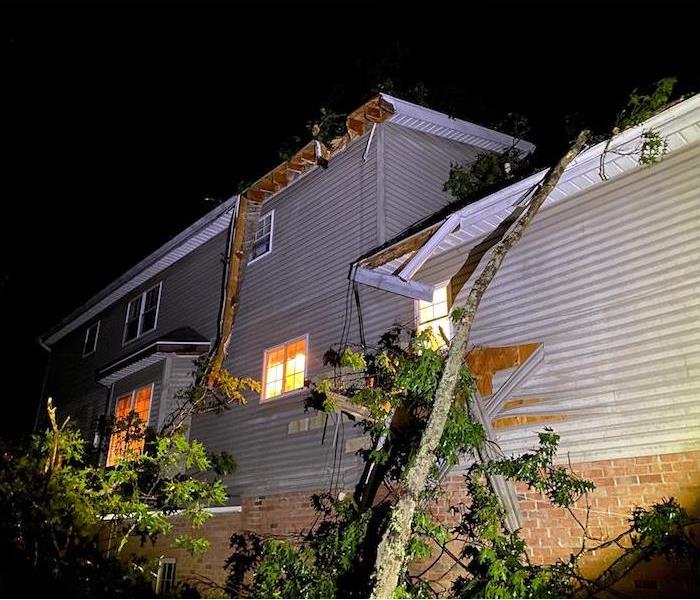 Summer storms affecting your property? Call SERVPRO of Cudahy/St. Francis to restore your space in no time!
Summer storms affecting your property? Call SERVPRO of Cudahy/St. Francis to restore your space in no time!
In the aftermath of a powerful storm, safety is everything. As things settles, a structured approach to recovery makes all the difference.
Here are some key steps to take after a storm to help you and your family return to normal life swiftly and seamlessly.
Documenting Damage for Insurance ClaimsThe aftermath of a storm often leaves behind a trail of destruction. For homeowners and property owners, documenting the extent of damage is crucial for filing insurance claims. Photographs and videos of the affected areas should be taken from multiple angles to provide a comprehensive view.
Make detailed notes about damaged items, structural issues and any potential safety hazards. Keep receipts of expenses related to immediate repairs, as these can be included in your insurance claim. The process doesn’t have to feel daunting, however! Our SERVPRO® team has extensive experience dealing with insurance providers and can answer any questions that might arise.
Keeping Communication Lines OpenIn the wake of a severe storm, communication networks can become strained, and phone lines may be congested. In this instance, it’s better to rely on text messages or social media platforms to communicate with family, friends, and neighbors.
Texts are often more likely to go through in times when voice calls might fail. Utilizing social media platforms can also provide a way to update a larger group of people about your safety and any available resources, while saving emotional energy.
Checking on Your NeighborsCommunity support is vital during times of crisis. After a storm, check on your neighbors, especially those who might need assistance due to age, disabilities or other vulnerabilities.
Establishing a sense of unity and cooperation can foster a safer and more resilient community. Sharing information about local resources and recovery efforts will help everyone get back on their feet faster.
###Contacting Professionals for Help
When faced with significant property damage, it’s wise to seek professional assistance. Our team at SERVPRO specializes in dealing with disasters of all kinds, including post-storm cleanup and restoration work. We can assess the extent of damage and implement efficient restoration procedures. Our experience and resources will help ensure that your property is restored to its pre-storm condition as quickly as possible.
Navigating the aftermath of a storm demands a methodical approach. By documenting damage, employing alternative communication methods, assisting neighbors and seeking professional help from our team at SERVPRO, recovery becomes more manageable and efficient. Remember, in dealing with a difficult situation, preparedness, unity and professional support are the cornerstones of a successful recovery.
If a storm leaves your home damaged, contact us for fast recovery.
Safeguard Your Home Before Winds Blow Through Milwaukee | SERVPRO of Cudahy/St. Francis
6/5/2023 (Permalink)
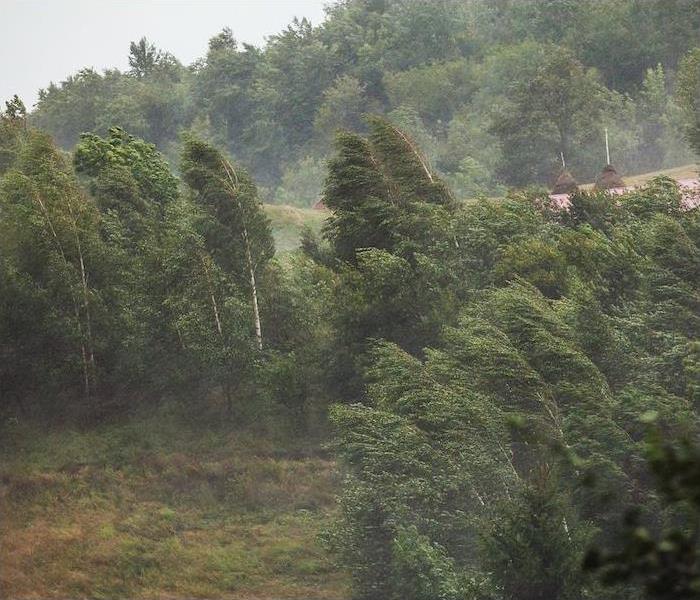 If you've suffered from storm-related damage to your home or business, make SERVPRO of Cudahy/St. Francis your first call.
If you've suffered from storm-related damage to your home or business, make SERVPRO of Cudahy/St. Francis your first call.
On a sweltering day, a gentle gust of wind can feel like a refreshing present from Mother Nature. Though we cannot see the wind, it is a constant presence that we can always rely on—even when it may not be to our liking.
However, when the wind picks up and turns into a strong gale, it can wreak havoc and leave behind a trail of devastation, reducing homes to rubble. While high winds are often associated with violent storms, they can occur even on sunny days.
Educate yourself about the impact of powerful winds and how they can harm your property, and take necessary precautions to safeguard your loved ones and your dwelling.
<h3different-kinds-of-wind">The Different Kinds of Wind
Over half of all destructive wind events are attributed to thunderstorms, making them a threat that should not be taken lightly. In fact, thunderstorm winds are responsible for more damage than tornadoes.
Thunderstorms can produce winds that reach speeds of up to 60 miles per hour, which can easily scatter debris across yards and cause significant damage to structures.
One type of thunderstorm wind is known as straight-line wind, which can be incredibly powerful, reaching speeds of up to 100 miles per hour. Unlike tornadoes, straight-line winds are not associated with rotation and can cause damage even in areas without any rainfall.
Tornadoes, on the other hand, are known for their destructive capabilities due to the combination of different types of winds they produce. Tornadoes aren’t as prevalent in Milwaukee, but they can certainly do damage on the rare occasions when they do strike. High winds can occur anywhere, thus it doesn’t require a tornado to cause terrible damage in our area!
<h3damage-and-prevention">Wind Damage and Prevention
Strong winds can cause extensive damage to properties, including downed trees, debris scattered around and disrupted power lines. Even a mobile home that is anchored down can experience severe damage when winds exceed 80 miles per hour.
Understanding weather alerts and securing loose outdoor objects are two vital ways to prepare for high winds and minimize potential damage to your property and safety.
Prune your trees regularly, and if you have tall trees on your property, hire a professional to maintain them every five to 10 years. Keep your yard free of loose branches and other items that could be picked up by the wind and cause damage.
Search around your property after the wind has calmed down to assess any damage that might have occurred. Be sure to examine your roof for any damages, such as misplaced shingles, and replace them immediately to prevent water seepage. Call SERVPRO to repair your wind damage, and we’ll restore your home in no time.
Has your home been damaged by wind? Call us and get things cleaned up fast.
The Types & Causes of Flooding | SERVPRO® of Cudahy/St. Francis
4/9/2022 (Permalink)
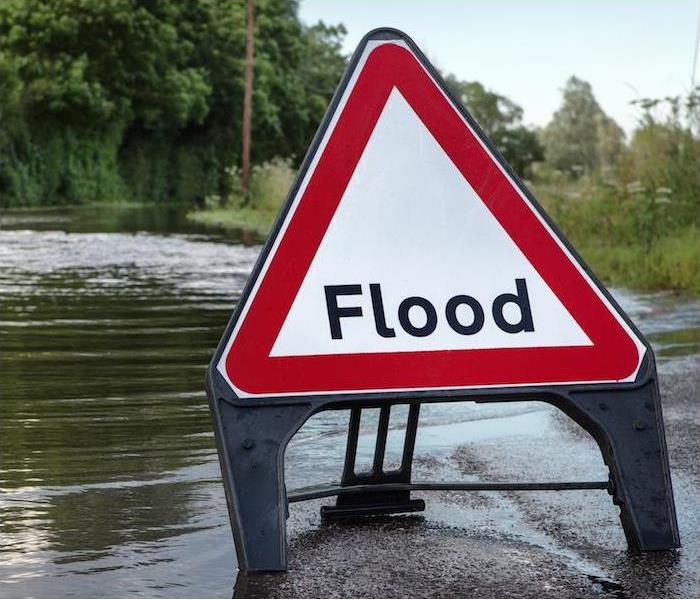 Regardless of the cause of the flooding, SERVPRO of Cudahy/St. Francis has the team to help you recover from any disastrous event.
Regardless of the cause of the flooding, SERVPRO of Cudahy/St. Francis has the team to help you recover from any disastrous event.
The most common natural disaster in the United States is floods, causing more deaths each year than hurricanes, tornadoes or lightning. Flooding can cause damage to anyone, from small areas to enormous spans of whole neighborhoods and cities.
Flooding happens in all 50 states and all U.S. territories, although there are similarities in its variations and causes. There are three unique kinds of floods, which occur due to four primary reasons.
3 Types of Natural FloodingFlash floods occur when significant rains run across an area, overriding the ground’s ability to store the moisture. Excess water flows away, bringing garbage, vehicles and other detritus with it.
River flooding is precisely what it sounds like. When a river’s banks are unable to retain the surplus water, the water spills over the brink, causing the areas around the river to be flooded, often causing significant damage.
Coastal floods occur in regions near oceans when storm surges or cyclonic activity boost the ocean or gulf levels to flood level.
The 4 Most Common Causes of Natural FloodingHeavy rainfall. Storms with heavy rainfall or storms that remain for a long period of time over an area could result in flash floods or river flooding. Urban environments are especially prone to rain floods, because the increasing amount of concrete and asphalt means that there is inadequate soil to absorb all that water. Over 7,000 houses in Milwaukee have a higher than 25% probability of being badly flooded in the next 30 years. This equates to 5% of all residential homes in the city. Flooding may create a slew of problems for Milwaukee residents, including disruptions to utilities, first responder services, transportation and highways, all of which have a negative influence on the area’s economic well-being.
Oceanic activity. Storm surges, hurricanes and high tides all have the potential to raise water levels in waves, wreaking havoc on coastal communities.
Dams and levees failing. The most memorable example of this in recent history would be the terrible levee failures during Hurricane Katrina. Levees and dams fail due to cracks or when the ability of the dam to regulate the surge of water behind it is surpassed.
Snowmelts and ice dams. Snow and ice may collect over the course of a winter in areas of the nation that have heavy snowfall and prolonged freezing conditions, and when they begin to melt, they create rivers of water that flow through adjacent towns. Ice dams or ice jams occur when rivers get impeded by built-up ice that is carried downstream, causing the banks to overflow.
Regardless of the cause of the flooding, SERVPRO has the tools and teams to help your home or business recover from its disastrous effects. Contact us anytime when flooding or water damage makes a mess in your life.
Spring Brings Weather Hazards to Wisconsin | SERVPRO® of Cudahy/St. Francis
3/12/2022 (Permalink)
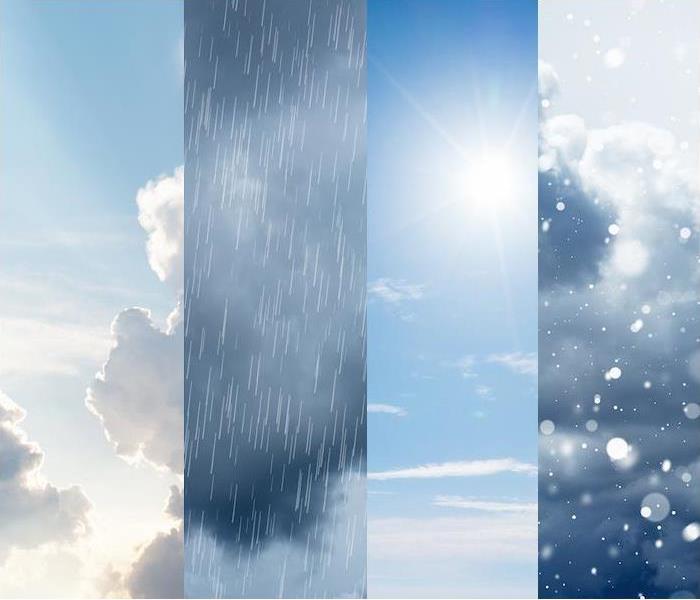 Extreme temperature changes can lead to the possibility of severe weather. SERVPRO of Cudahy/St. Francis is a click away if you experience any damage.
Extreme temperature changes can lead to the possibility of severe weather. SERVPRO of Cudahy/St. Francis is a click away if you experience any damage.
The United States is one of the world’s largest nations, second only to Russia and Canada in terms of total land area (though China is also larger if outlying US territories are excluded).
With such a large region under one umbrella, seasonal weather is not one-size-fits-all. Different parts of the nation endure unique weather patterns and variable degrees of weather threats.
As spring approaches and warm and cold air meet throughout the country, let’s take a look at the unique weather events that may be anticipated in a few broad areas, and more particularly what we need to consider here in Wisconsin.
Up in the Pacific Northwest, spring months are prone to severe rain, which may result in floods and water damage for region inhabitants. Higher altitudes will continue to have snow, and the melting and runoff from that will create issues of its own.
The Upper Midwest, including here in Wisconsin, and the Northeast regions have the longest duration of cold winter weather. Chilly weather will persist for the entirety of the winter season. As spring arrives, severe thunderstorms are a threat here in Wisconsin, continuing throughout the summer months. Residents from Maine to the Dakotas may anticipate very cold weather winters and the threat of snowstorms and blizzards even until late spring or possibly early summer.
On the other hand, the southern West Coast will have to watch out for excessive heat waves that could threaten lives and property, while the South Pacific, including Hawaii, will be on the lookout for potential tsunamis caused by tectonic activity.
The central United States, from Iowa to Texas, will need to be vigilant for windstorms, derechos and the threat of wildfires, which may readily spread during dry seasons and strong winds. A large portion of this territory is also Tornado Alley, an area with a high frequency of tornadoes.
Finally, the Southeast may be subjected to a variety of extreme weather events, ranging from tornadoes and severe thunderstorms in landlocked states to hazardous rip currents along the coastal areas with early-season hurricanes later in the spring.
Regardless of where you reside in the United States, the possibility of severe weather exists. Yours may differ from that of a friend a few states away, but it never hurts to be aware of the times and be prepared.
If extreme weather leaves you with damage from water, fire or other elements, help is a click away. Contact SERVPRO for fast, expert recovery.
Be Ready for Winter Storms and Extreme Weather | SERVPRO® of Cudahy/St. Francis
1/14/2022 (Permalink)
It’s about to be that time again. The season of family gatherings, religious and cultural holidays and that oh-so-hopeful countdown to a new year. It’s a wonderful time for many, but don’t let it distract you from the important need to prepare for potentially hazardous weather.
Living in the Milwaukee area provides a virtual guarantee that you’ll be encountering some kind of heavy winter weather this year. So as fall fades and winter waits, let’s look at the list of things for which you should be preparing.
Protect Your FamilyOne of the most crucial and important things you can do to prepare your family and household is to communicate. Make sure your family has an updated emergency action plan that will allow everyone to act in confidence in the face of an emergency.
Get your vehicle winter-ready. Check all systems and get a tune-up, ensuring everything is working properly, including your battery. Top off fluids as well, replace your windshield wipers if needed, and rotate or replace any tires that may be necessary.
Protect Your HomeFrozen pipes are a very real danger in a deep freeze, and they can lead to massive water damage if they occur.
Whatever your heating source is at home, check that it’s in good working order to last for the winter season. If you use any wood-burning stoves or fireplaces, make sure they’re clean and well-ventilated. Keep extra firewood on hand in case you get shut in at any point. Always use caution with any source of flame, and never use fuel accelerants to start or propagate a fire.
It’s also a good time to check that your attic is properly insulated and re-seal any windows that may be letting cold air blow in.
Protect Your PetsIf you have pets that you can bring inside, let them stay cozy with you during the winter cold. Make them a comfortable spot to call their own.
If you have livestock or outdoor-only animals, be sure to provide them with good shelter and ready access to water that isn’t frozen.
Watch for Melts and FloodingSnowmelt and thawing ice can produce dangerous floods and ice dams that threaten the security of homes and businesses. Let local alerts keep you up to date and aware of these potential dangers.
If winter weather should bring damage or flooding to your home or business, contact SERVPRO for fast, restorative solutions.
Preparing for Summer Storms | SERVPRO® of Cudahy/St. Francis
8/25/2021 (Permalink)
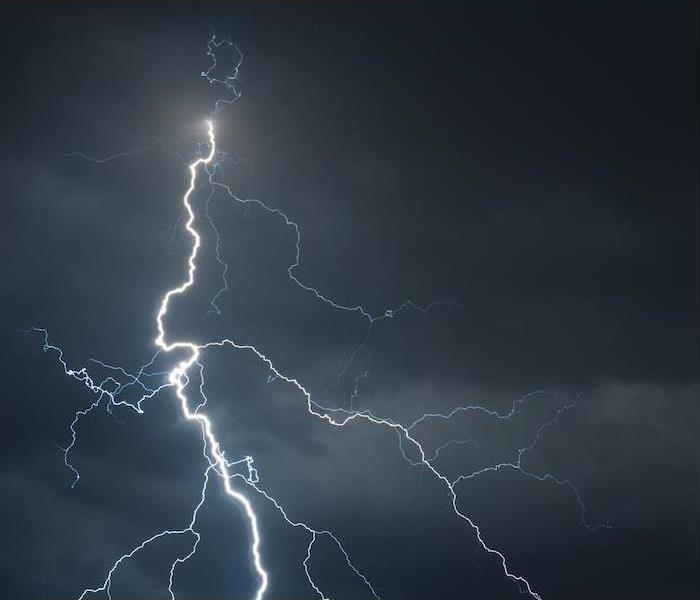 If storms cause damage to your home or business, SERVPRO of Cudahy/St. Francis is on the line, ready to make things right.
If storms cause damage to your home or business, SERVPRO of Cudahy/St. Francis is on the line, ready to make things right.
Summer is in full swing, and many of us are enjoying the things we love most about the warmest time of the year. Vacations are taken, days on Lake Michigan are enjoyed, and the days are long and beautifully sunny—aren’t they?
It might actually seem as if thunderstorms happen more often during summer months, and that would be true. Warm air and moisture clash in summer months to increase the likelihood of thunderstorms—and while August isn’t typically the month in the Milwaukee area with the most rainy days, it is the month with the most precipitation.
Be Storm-Alert
Thunderstorms may be a given part of summer, but they should never be ignored just because they’re common. Always give ear to weather alerts, and consider the possibility that outdoor events may need to be moved or postponed.
Prepare by acquiring an NOAA Weather radio that can continue to feed you information even in a power outage.
It’s difficult to totally predict flooding, but if the forecast says it’s possible, you should plan to stay home and forego potentially dangerous travel. Heavy storms and high winds can overturn objects in the yard and cause tree branches to break. Keep trees trimmed and move items like outdoor furniture to safe, covered locations if possible.
Never take storm preparation and safety for granted—storm incidents kill dozens of people every year.
Be Storm-Safe
During a thunderstorm, stay inside to avoid the risk of lightning injury. When you haven’t heard thunder for 30 minutes, the storm has moved out of the danger radius and you can safely return to the outdoors.
Tubs and showers easily conduct electricity, so you shouldn’t bathe or shower while a storm is active. Avoid windows as well.
In cases of extreme thunderstorms that may result in prolonged power loss, make sure you’ve stocked an emergency kit and reviewed local evacuation routes.
If the area is flooding, stay off the roads and avoid coming in contact with potentially toxic flood water. If you come to flooded sections of road while driving, find an alternate route. Rushing water can lift your car off the roadway or destroy entire sections of streets.
There are any number of dangers that can come into play in a thunderstorm, and it’s always best to be cautious and put things on hold until storms safely pass. If storms cause damage to your home or business, SERVPRO is on the line, ready to make things right again.�
The Cost of Extreme Storms | SERVPRO® of Cudahy/St. Francis
8/5/2021 (Permalink)
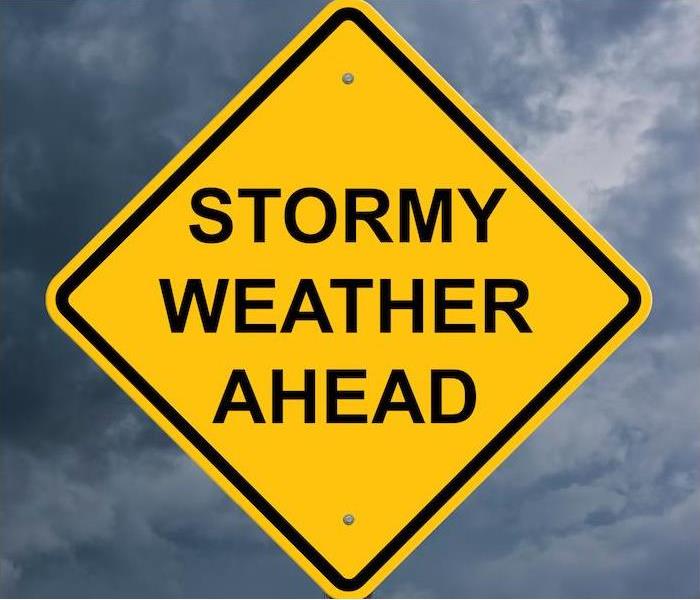 When storms do damage, we go to work to make things right. Contact SERVPRO of Cudahy/St. Francis to start the restoration process.
When storms do damage, we go to work to make things right. Contact SERVPRO of Cudahy/St. Francis to start the restoration process.
2020 was an all-time bad year on many levels both measurable and immeasurable. And as if to add insult to injury, it was a record-setting year for extreme weather as well. Of all the years in history for which we have data, 2020 was the most financially destructive.
There were 22 official weather disasters (which are defined as events that cause at least a billion dollars in damages) in 2020, to say nothing of the number of other storms that didn’t reach that mark. So numerous were the year’s hurricanes and tropical storms that the NWS had to make use of the Greek alphabet for just the second time in history to be able to give them all names.
Not Only Hurricanes
It’s easy to understand why hurricanes would cause widespread, costly damage and losses, but they’re not doing it all. In fact the most expensive disasters of 2020 in the contiguous United States were thunderstorms and tornadoes.
Fourteen of the year’s official weather disasters were severe thunderstorms, some of which cranked out tornadoes as well. Thunderstorms happen in every area and season, and there’s no way to avoid them. They happen in both coastal and landlocked states, Great Lakes to Gulf of Mexico, and everywhere in between.
Just one example of how powerful a single storm can be: In August 2020, what started as a typical line of storms in eastern Nebraska morphed into a derecho (picture a tornado composed of straight winds instead of swirling ones, plus a heavy thunderstorm) which affected over 10 million acres of corn fields, almost half the state’s crop—that’s more than 11% of the entire country’s corn fields.
That same month, we saw flooding in our own area when a heavy storm system dumped up to six inches of water on Milwaukee County, washing away roadways and swamping vehicles.
Not Only 2020
Unfortunately, 2020 seems to be more in line with a new-era average than an outstanding occasion. It was the 10th straight year with at least eight billion-dollar disasters. 2018 and 2019 saw a total of $136 billion in damages, and 2017 alone took in damages over $300 billion, the highest total ever recorded.
The bottom line is that we can’t stop storms from happening, and they seem to be happening more intensely and more often. As a home or business owner, you should take every precaution to keep yourself and your home safe.
And should those precautions fail or be inadequate to prevent damage, we’re here to restore your property "Like it never even happened."
When storms do damage, we go to work to make things right. Contact SERVPRO today to see how we can help.
Staying safe during a thunderstorm
11/6/2019 (Permalink)
We love hearing hear that thunder rolling in ahead of a big thunderstorm. I’m sure we’re all guilty of going out on our porches to watch the clouds, thunder and lighting roll in. Unfortunately, this can be one of several dangerous things to do as exciting as it may be. Here are some things you should never do in a thunderstorm.
- Don’t stand out in the open (golf courses, porches)
- Taking a shower during a thunderstorm can be dangerous. If the house gets hit by lightning, the bolt can travel through water pipes and electrify you.
- Don’t touch a concrete structure. Often times concrete and buildings tend to have metal wires or bars through them.
- Don’t stand under wooden object such as a tree. Lighting can jump from tree to tree because humans conduct electricity more than trees can.
- You also shouldn’t lie down. You would think this might be safe as standing under a tree for example can be dangerous. Even from 100 feet away, the electric current from lighting that runs on the top of the ground can be deadly. You should crouch down in a ball and tuck your head cover your ears with your hands.
- Never leave your pet outside. It is just as dangerous for them to be outside as a human. A doghouse is no safer. Bring pets inside.
- Never touch anything wet as water conducts electricity.
- If someone near you has been hit by lightning, don’t be afraid to help them. You can’t be electrocuted if you touch someone who has been, humans cannot store electricity.
- Don’t stand near a window as windows and doors may contain metal parts that can conduct electricity.
- Finally, never go outside directly after a storm. You should wait at least 30 minutes.
These are some helpful things to remember to keep you, friends and family safe during a thunderstorm.
 If your home or business was damaged in a storm, call SERVPRO of Cudahy/St. Francis to get you back in action.
If your home or business was damaged in a storm, call SERVPRO of Cudahy/St. Francis to get you back in action.

 24/7 Emergency Service
24/7 Emergency Service






